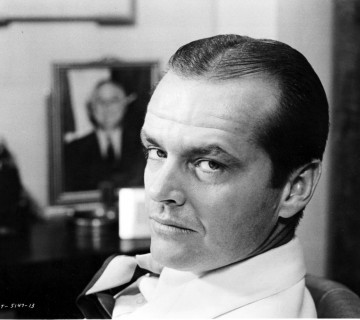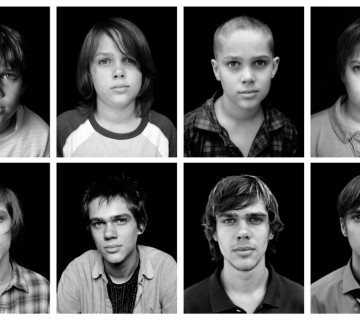This past year I was fortunate enough to be on the SAG Awards nominating committee. It was an honor and a privilege, because it meant that I was among a select group of actors and actresses who were entrusted with highlighting the past year’s finest performances by our colleagues. But also, it was just really cool to be able to attend screenings of all the eligible films, followed by Q&A’s with the cast and filmmakers.
And it got me thinking.
The truly memorable performances came not from a great story or the words on the page, but from the level with which the actor allowed him-/herself to embody their character. Two performances stood out to me this year; Eddie Redmayne as Stephen Hawking in The Theory of Everything and Jennifer Aniston as Claire Bennett in Cake. Eddie Redmayne bringing a brilliantly nuanced performance as Hawking, as his health deteriorates, and Aniston bringing a flat portrayal of a depressed woman suffering from chronic back pains. Now, it’s easy to dismiss Jennifer Aniston as a one-note rom-com actress, but if Matthew McConaughey can redeem his career, why not Aniston? In the case of Cake, it’s because she did not truly step into her character’s state of chronic pain and mental suffering. She played the surface. She made the faces. She cried the tears. But somehow I didn’t really believe her. Redmayne on the other hand was Stephen Hawking for 123 minutes.
And during the Q&A’s with Aniston and Redmayne, respectively, it became clear why the two actors with similar challenges ended up with two completely different performances: Their difference in approach to getting into character was monumentally different.
During the conversation with Eddie Redmayne, he described how he had spent four months studying Stephen Hawking. He was watching every documentary, every YouTube clip, reading everything he could find on the physicist. He worked with a physics teacher to better understand Hawking’s work. He was also visiting a neurology clinic in London every two weeks, speaking with patients, so he would better understand what it was like to live with a paralyzing neurological disease. And when it came time to physically embody his character, he worked with a choreographer for several months to get the movements and body positions just right – for every stage of Hawking’s life, as the disease got more and more paralyzing. Together, Redmayne and his choreographer would film his movements, study them on the iPad, take notes for use during the shooting – and he even spent weeks rehearsing in public parks, so he would feel what it was like to live with ALS in real life. Or as real as possible, we should say.
And that’s what earns you an Oscar nomination.
Jennifer Aniston gave similar insight in her Q&A, describing how she had ‘empathy’ for the character, had worked with doctors and physical therapists to understand how to walk when drunk and on pain medication, and how she had to wear a back brace during filming, so she would have a constant reminder of the physical manifestations of chronic back pain.
While Eddie Redmayne stayed in the same, crippled position in his wheel chair between takes, because it was too painful to get in and out of character, Jennifer Aniston wore a back brace to remind her to keep her back straight, because that’s what you do when your back hurts.
And that’s what will not earn you an Oscar nomination.
All of this to make a point: Getting into character is not to be taken lightly. It will show on screen if you act from the surface (meaning you look like you’re in pain, but you’re not actually feeling it) instead of owning the physicality (meaning you feel the pain and you know what it’s like to live with it, not just in a moment, but in life). And it works the other way around too; it will show on screen if you manage to completely embody the character’s circumstances.
If you look at some of the great film performances throughout history and do a little digging to find out how each actor or actress approached their role, it paints a pretty clear picture. Feel it, don’t fake it. Embrace it, don’t fear it. Live in the circumstance of your character – don’t let the character live in your circumstance.
And so, in the age of lists, let’s make one.
5 Times an Actor or Actress Truly Embodied a Character
Eddie Redmayne – The Theory of Everything
This one has already been explained above, so please just let the clip speak for itself.
Hilary Swank – Boys Don’t Cry
Even though Swank was only in her early twenties when shooting Boys Don’t Cry, she dove right in. She lived for months as a man in preparation for her role. She wrapped her chest in tension bandages and stuffed socks down her pants. Her neighbors during that time reportedly thought that the young man coming and going from Swank’s apartment was a visiting brother – when in fact it was, of course, Swank herself.
Philip Seymor Hoffman – Capote
Hoffman spent four month preparing for this role, working on the technicalities (like Capote’s speech and mannerisms), but also on looking at all the historical material through the eyes of Capote – not himself. He also lost 40 pounds.
Robert De Niro – Taxi Driver
On top of studying mental illness and Midwestern accents, De Niro also worked 12-hour days as a cab driver for a month. He hass also said that he saw his character as a crab, which made him walk and act in certain ways. The “You talkin’ to me?” scene is completely ad-libbed. But it’s not De Niro talking. It’s his character.
Meryl Streep – Sophie’s Choice
The scene where Streep’s character has to choose which of her children gets to live and which must die, may very well be one of the most truthfully emotional scenes. Ever. Streep has said that the reaction from both her and her on-screen daughter was not acting – it was what happened in the moment. To prepare for this, Streep and the girl spent months bonding, going to playgrounds, playing in hotel rooms, just hanging out. The girl, who had never acted before, had such a bond with “her mother” that when they shot the scene, she really did feel like she was being taken away. As did Streep.







Join the Conversation →